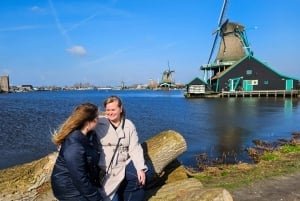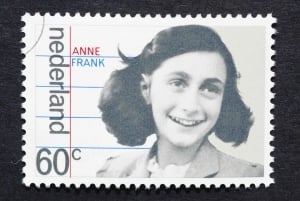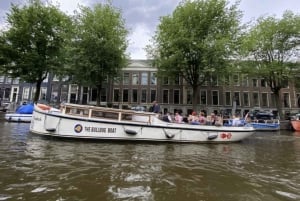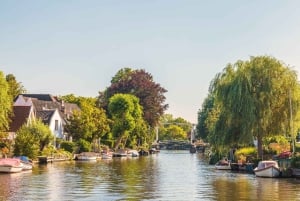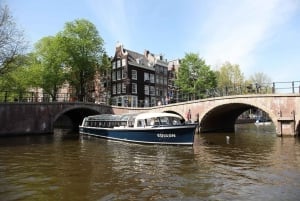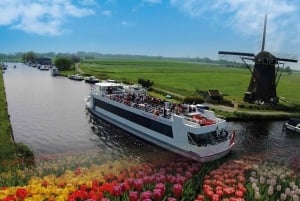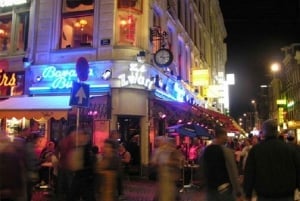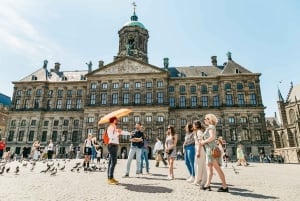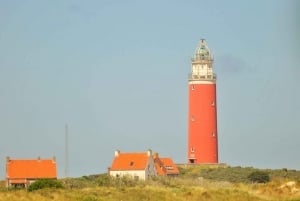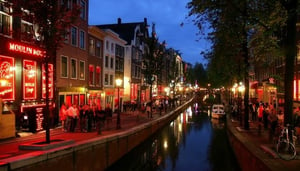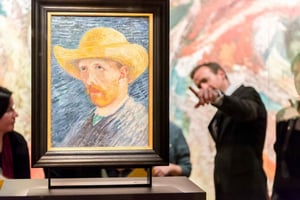Amsterdam History
The largest city of the Netherlands and one of the greatest planned cities of northern Europe, Amsterdam has witnessed as much greatness and prosperity as it has brutality and despair. With its name being indicative of its origin- ‘a dam in the river Amstel’, this capital of the Netherlands, now known for its tolerant attitude, has been an eminent part of world history.
Amsterdam was initially developed as a fishing village around the Amstel dam. However, it was commercial trade that eventually put Holland on the map, with Amsterdam setting its sights on maritime routes and sailing right into the Baltic. In order to support its flourishing trade, canals were dug around 1380 in the modern-day Medieval Centre. New building laws emerged as fires around 1452 devoured most of the wooden houses built in the Middle Ages.
In the early 1500s, Amsterdam became part of the Spanish empire with Catholicism as its main faith, due to various treaties and dynastic weddings. However, the lack of religious freedom and repression led to revolts against Philip II of Spain that launched the 80 years’ war.
With Dutch ships controlling sea trade and virtually creating a monopoly over Arctic whaling and North Sea fishing, the 1600s saw the beginning of the Golden Age in Amsterdam’s history. Not only did this era witness a tremendous change in the cityscape of Amsterdam, but also crowned the city as the most important port in the world along with it being the leading centre for diamonds and finance. With a series of overseas possessions during the Golden Age, later known as Dutch colonies, the Dutch East India Company also became the world’s first stock exchange.
The first half of the 19th century saw Amsterdam struggle to recover by salvaging its neglected harbor and sandbanks in the IJ. However, the city’s efforts to improve and strengthen its infrastructure, such as opening the first railway in 1839, constructing new museums and the Concertgebouw, as well as digging the Amsterdam-Rhine canal, led to the improvement of commerce with the rest of Europe.
After the First World War, Amsterdam retained its position as the country’s industrial centre. The Dutch Shipbuilding Company helped support a large steel and diesel-motor industry, while the harbor managed tropical produce including tobacco and cocoa. The world’s first air service was started in 1920, while in 1928 the city played host to the Olympic Games. However, the world Depression of the 1930s hit the city hard and the tension between the communists, socialists and Dutch fascists could no longer be contained.
In spite of their neutral position, the Netherlands were invaded by Germany in 1940. The Jews bore the brunt of the invasion with only one in every 16 of the 90,000 Jews in Amsterdam surviving the ordeal. A lack of food, fuel and communications broke down the city. While the Dutch Resistance was formed, it wasn’t until 1945 that the city was liberated after the intervention of the Canadian troops.
The resilient city resumed growth initiatives right after the war with the help of the aid from the US. New suburbs and apartment blocks with access to wide open spaces were developed to meet the demand for housing.
During this more recent period of history a cultural revolution took over Amsterdam, where an ‘agreement to disagree’ became the norm. The late 1960s had the hippies smoking dope, students demanding greater say in the Universities and a women’s movement that made Amsterdam Europe’s ‘Magic Centre’.
Almost twenty years after the beginning of the Cultural Revolution, Amsterdam took to a new consensus headed by the mayor Ed van Thijn. It was now about renovation instead of demolition, creating more livable conditions, friendly neighborhood police and a practical approach towards drugs, prostitution and homosexual couples.
The dawn of the twenty-first century saw an Amsterdam that was gripped in darkness with a few rays of hope. The tightening of immigration laws questioned the tolerance limits of the Dutch identity, leading to the assassination of Pim Fortuyn in 2002. Social tensions continued to rise. And while the recession following 9/11 pushed the city to the edge, the brutal murder of filmmaker Theo van Gogh, well-known for his anti-Muslim views, tipped it over.


